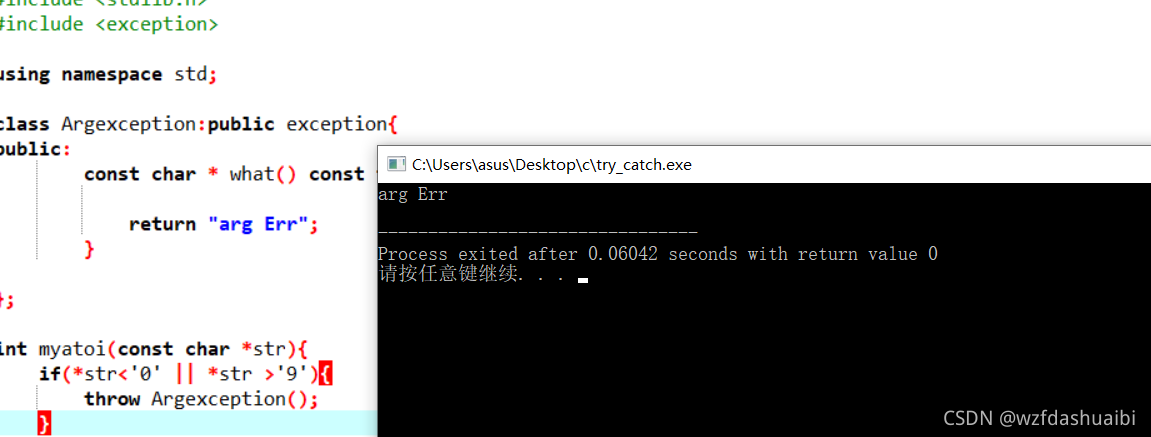异常:是用来显示异常的一种方法。
try{
…
…
…
}catch(){
显示异常。
}
它实现的时候。当try里面的正常运行的代码遇到异常的时候,就会,不执行接下来的语句。这就类似与go to 语句。
它可以解决以下问题:
#include <iostream>
#include <stdlib.h>
using namespace std;
int main(){
int a = atoi("abc"); //atoi只能转换字符数字,这是出错的传参
int b = atoi("0");
cout << a;
cout << b;
}
这会导致俩条语句打出来的是一样的。
但是编译器怎么知道什么时候是异常呢??
我们可以自己定义异常然后再用throw抛出异常
代码:
#include <iostream>
#include <stdlib.h>
#include <exception>
using namespace std;
class Argexception:public exception{
public:
const char * what() const throw(){
return "arg Err";
}
};
int myatoi(const char *str){
if(*str<'0' || *str >'9'){
throw Argexception();
}
else{
return atoi(str);
}
}
int main(){
try{
int a = myatoi("abc"); //atoi只能转换字符数字,这是出错的传参
cout << a << endl;
}catch(Argexception a){
cout << a.what() << endl;
}
}
